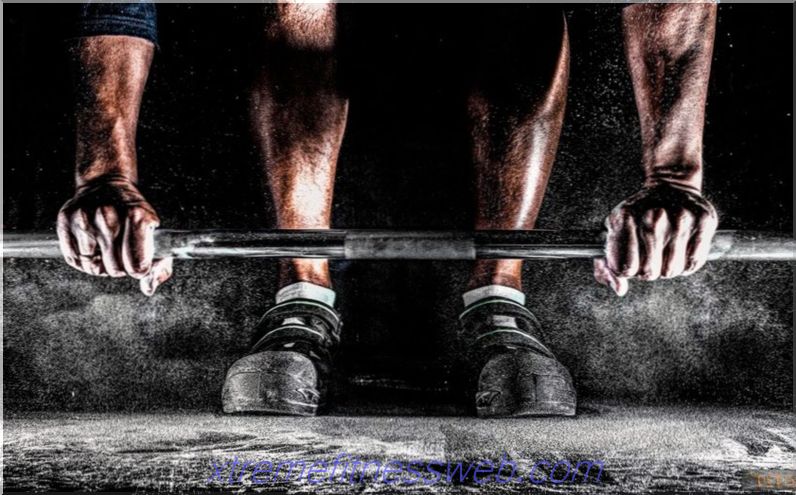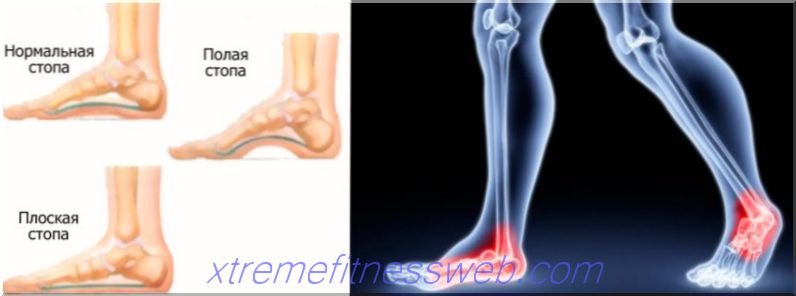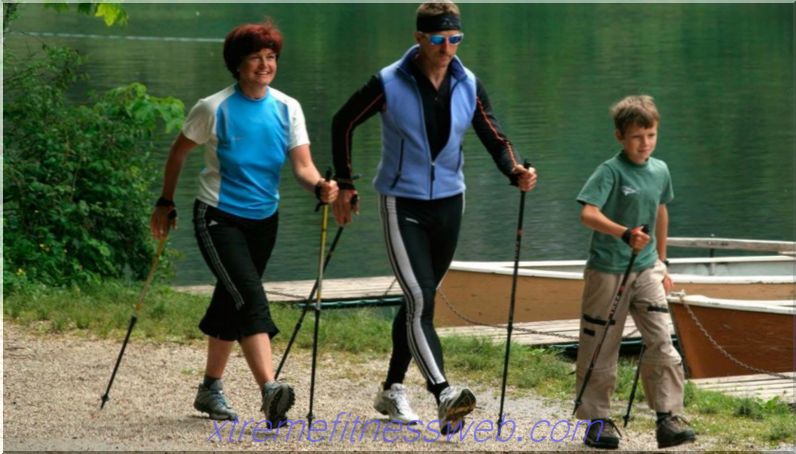- Execution technique
- Options
- Parsing exercise
- Exercise Preparation
- Tips
- Program Inclusion
- Contraindications
- Interesting Facts
- Alternatives

Flexing the lower leg in the simulator is a simple, isolating exercise for the biceps of the thigh. A man brings the heel to the buttock by reducing the biceps of the thigh and lowers the leg to its original position. This exercise is performed by both beginners and those who have been engaged in bodybuilding for a long time. The movement exists when the athlete lies face down on the bench, and when he performs a flexion while standing, leading the heel of one leg to the buttock. In classical training, there is a replacement - bending both legs with a dumbbell while lying down.
Content
- 1 Technique
- 1.1 Starting position
- 1.2 Movement
- 1.3 Caution
- 1.4 Recommendations
- 2 options
- 3 Analysis of exercises
- 3.1 Anatomy of exercise
- 3.2 Benefits of Exercise
- 3.3 Disadvantages
- 4 Preparation for exercise
- 4.1 Correct execution
- 4.2 Errors
- 5 Tips
- 6 Inclusion in the program
- 7 Contraindications
- 8 Interesting Facts
- 9 Alternatives
Execution technique

Starting position
- Much depends on the height of the athlete and the length of the bench simulator, as well as on the position of the pillow-retainer. It must be installed so that you can start with “soft”, slightly bent knees, and so that the athlete can bring heels to the buttocks without any problems;
- The pillow-retainer should not roll onto the heel itself during movement, but should be on a bend, in the region of the Achilles tendon;
- Weight is set depending on the experience and strength of the athlete, do not put too much weight, this is not a movement to develop strength;
- To take the starting position you need to lie face down on the bench and rest your feet on the cushion of the simulator
Traffic
- It is enough to bend the legs at the knees so that the heels begin to move towards the buttocks, and bend the legs at the knees;
- The movement continues exactly until the heels hit the buttocks, or until the volume of the hips and lower legs allows;
- At the peak of the amplitude of the biceps, the hips are slightly tensed, and then the hip is extended and legs are lowered;
- The number of repetitions of the movement from 10 to 20 or more, if necessary according to the training plan of the athlete.
Attention

- Some athletes give their hips biceps a rest during this exercise, extending their legs completely and “inserting” their knees in the position that is typical for a deadlift. It is necessary to ensure that the tiles of the safety stops do not touch each other and the exercise is performed with an almost constant tone of the working muscle;
- The knee can and should be protected from injuries if the athlete does not rest his kneecap on the simulator’s pillow itself;
- There is no need to create a “swing” of the pelvis, inertial movement, which will contribute to overstretching of the knees and injuries, as well as to take part of the load from the hip biceps;
- It is not recommended to actively move the ankles along and across the cushion of the simulator. Such movements will contribute to injuries of the Achilles tendon;
- Activation of the hip biceps is possible without the extra movements that many make, as if straightening the knees. This version of the exercise is quite traumatic for the ligaments, so you do not need to perform it.
Recommendations
- Watch your body position on the bench. It is most convenient to bend your legs if the hip joint falls on the “high” part of the bench, that is, the place where it is the highest;
- Do not push the pillow with your heels, and do not fidget on the bench;
- Try not to “insert” the knees until the extension;
- Do not fight with weights, and do not overload yourself with isolating exercises in principle;
- If you use drop sets, make sure that with fatigue the technique does not change, and your knees do not rest against the bench;
- Do not "lose" weight so that the simulator tiles beat against each other;
- Do not reach the weight with your back, avoid excessive inclusion of the buttocks, this is not an exercise for them
Options

- Flexion with one leg lying down . This variation is needed purely for a change, if, for example, the client gets tired of the same program all the time, and he needs something to make his life more interesting. Bending with one leg is not very useful, although it can help with injuries when you need to "load" one leg;
- Bending standing . It can be performed in a special simulator or in a standard one. It is believed that this way the biceps of the hip are reduced more;
- Sock flexion in and out . Some bodybuilders believe that shifting socks in and out carries the emphasis from the outer to the inner segment of the biceps of the thigh. In fact, the knees do not allow to perform this “operation” qualitatively
Parsing exercise
Anatomy exercise

What muscles work:
- The main mover is the hip biceps;
The popliteal, calf, and gluteal muscles help the movement. But in the version of work in simulators, the help of non-main muscle groups is minimal;
Benefits of exercise
- It allows you to create a beautiful back surface of the thigh, works out not only the biceps of the thigh as a whole, but also forms a beautiful "peak of the biceps";
- It allows you to work with both one leg and two legs, ideal for those who have imbalances in muscle development;
- Hip biceps training is needed for bodybuilders who avoid pulling and concentrate on squats. Flexion will help protect your knees from injury due to uneven muscle development;
- It’s convenient to swing your hip biceps on a bench with a “kink”, it allows you to go into a more extended position and increase the amplitude without increasing the load on the knee, and without overloading the cruciate ligament;
- The simulator allows you to achieve perfectly symmetrical muscle development
disadvantages
- Sometimes athletes too "low" grab the heel of the simulator cushion, and then their hip biceps are not sufficiently isolated. In such a situation, it turns out that the calf "clogs up" and fails earlier than the hip biceps
Exercise Preparation

Some athletes are very fond of writing about preparing for this exercise, they include hip programs for stretching biceps, some “warm-up” exercises, and more. In practice, all this is not necessary. Insulating movements are performed after basic exercises. Usually the muscles are already full of blood and elastic, so that you can perform the movement efficiently.
In fact, if this is the first exercise in the plan for some reason, it is worthwhile to include a stepper on a cardio warm-up, and during work, start with a light weight. Most bending machines have an adjustable pad on which we rest our feet. It should be adjusted carefully enough so that the gastrocnemius do not clog during movement. This problem is the main reason why most athletes cannot benefit from the movement.
Correct execution
- Do not bend the legs at the knee by lifting the pelvis. This option will be quite harmful, as it can lead to lower back injury if the angle in the joint is violated. Usually, with a strong lifting of the pelvis, it is recommended to reduce the load and remove excess weight;
- Do not sharply push the cushion up, and lift the weight due to inertia. Untrained knee ligaments can be injured if you work unevenly, in addition, many simulators are designed to transfer load from an unevenly moving cable to the knee;
- You should slowly bend your legs, linger in the peak contraction, and also smoothly unbend your legs in order to get a load and not get hurt;
- If you can’t work smoothly, concentrating flexion on the exhale, it is recommended to remove the load, and work with less resistance of the simulator;
- It is better not to rest the patella in the simulator bench, if there is such a constructive opportunity;
- The feet must be held parallel to each other, and not rotated with socks during the exercise. Ideally, if the athlete does not maintain the distance between the knees during the exercise
Mistakes
- You can not rest your knees on the bench;
- Do not jerk the weight;
- If the training plan does not provide for this, movement along the reduced amplitude is not recommended;
- It is better to avoid active inclusion in the work of the hands, do not “cling” to the handles of the simulator;
- Do not bulge your pelvis at work
Tips

- Avoid the “ballet foot”, that is, stretching the toe forward, and as if pushing it away from the center of the arch of the foot;
- It is not recommended to perform work due to overstretching of the biceps of the thigh and “reverse” extension in the knee joint. But if possible, it is better to work on the simulator with a bench with a "break", which should lie on the hip joint;
- Toes go to the foot
Program Inclusion
This movement should not be an independent separate exercise on the day of the legs, and they do not need to replace the base, as well as some traction performed with overstretching of the biceps of the thigh. The movement should be done after basic exercises on the back of the thigh, on the corresponding day, if the athlete shares the day of the legs.
Exercise can be performed both for 10-12 repetitions, and for a greater number of them. It all depends on the individual muscle response. In power disciplines, this movement is not performed more than in 3-4 approaches in 10 repetitions. In bodybuilding, other options are possible. Some athletes make a movement in the "overload" style, use drop sets and various other methodological techniques to increase the intensity of the load.
Contraindications
- This movement is not suitable for some athletes due to anthropometry. They can only do it with their knees resting on the bench because of their small stature. So it’s worth switching to standing flexion;
- You should not perform the exercise if there was a recent knee injury, or if there is a high risk that the soft tissues around the joint become inflamed due to overload;
- This exercise should not be performed with spasms of the piriformis muscle (this is a condition where the pain in the buttock gives to the leg after performing deadlifts), then the movement will almost certainly occur due to the lifting of the pelvis, and the athlete will not receive the necessary load on the biceps of the thigh;
- Not recommended for injuries to the Achilles tendon and ankle;
- Better avoided if there is an injury in the lumbar spine.
Interesting Facts

- According to science research, it turns out that the socks spread still matters
- When turning the socks to the side, it turns out that the outer sides of the thigh get more load;
- If you connect the socks, the inner side of the thigh will get more load
- Ronnie Coleman thought this movement was great for developing massive hips. But you need to perform it not with the first movement, but only after lunges, squats, and Romanian traction. You need to do this exercise exclusively at the end of the workout.
Coleman advised doing this movement at the end of the workout, for 12-15 reps in 3-4 sets.
Alternatives
- If you go to the gym without a leg bending machine, you can do as old school athletes. You need to use leg curl with a dumbbell lying face down;
- The load can be simulated on the lower block of the crossover, then the leg can be alternately fastened to the lower block using a cuff;
- The third option, which is suitable for beginners and people who should not overload their hips, is to work with a fitness elastic band. They fix it on a furniture leg, or some other vertical support, and put their feet on the foot so that it does not slip. Next, you need to perform flexion with an elastic band while standing in order to get active involvement of the thigh muscles in the work;
- The easiest option is to bend the legs with weights on the ankles while standing. It is performed standing on a steppe or other support. It is suitable only for completely beginner athletes who will have enough of this weight;
- Training for beginners also involves performing a bend lying face down with weighting cuffs. You can do this movement alternately, one leg, putting on each leg several fitness weights.
Leg curl in the simulator is a good insulating exercise for the biceps of the thigh. For most people, a simple rule works - you need to perform as many bends as extensions. But if the athlete has too much quadriceps, he should focus on bending the legs.







